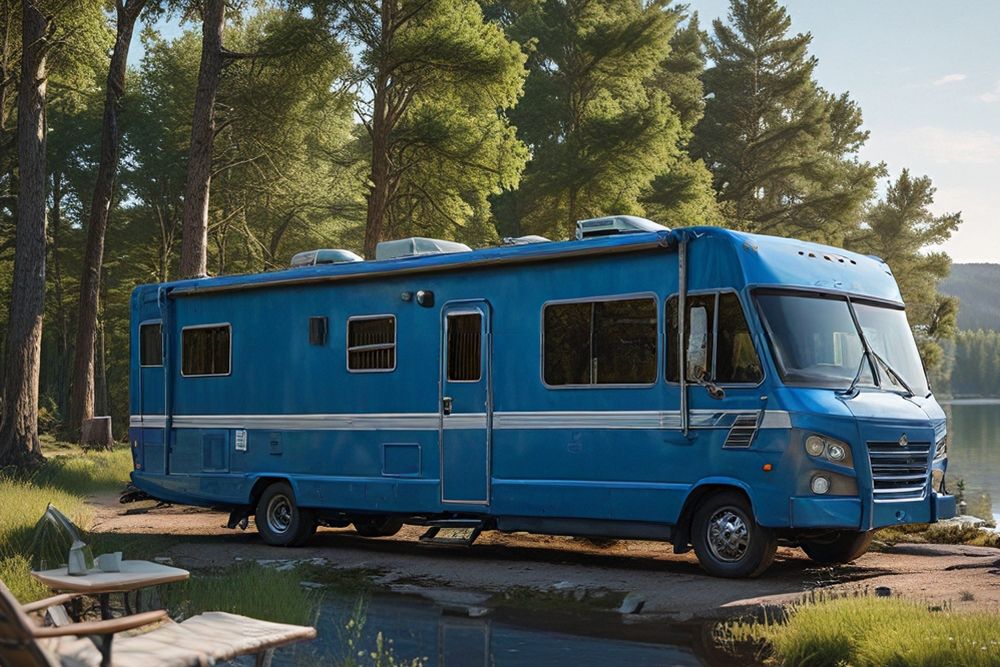Like any other automobile, selling a recreational vehicle (RV) takes time and careful consideration. Whether one is trying to sell an RV privately or via a dealership, the first step is setting the right price. To do that, it is crucial to know the precise value of the used RV. Today, one can learn about the resale value of their RV in multiple ways, including by using tools like NADA Guides and Kelley Blue Book.
Factors affecting RV value
When determining the resale value of a pre-owned RV, a few key details about the vehicle should be considered.
1. Make, model, and year
Popular, highly preferred RV models and brands are likely to fetch a better price than other options. For instance, Airstream is one of the popular RV brands. It holds its value better than other RVs due to its brand reputation and consumer demand. Similarly, Jayco and Winnebago are known for offering durable RVs, which helps them promise great resale values.
On the contrary, lesser-known brands and models typically quote a lower initial price for their RVs. These vehicles also depreciate faster, fetching a low resale value. Additionally, newer models tend to fetch a better price owing to more advanced features and technology.
2. Vehicle size
Big RVs tend to be more valuable owing to the additional space and amenities that they offer.
3. Mileage
This is the distance covered by an automobile. A low mileage is more desirable, as it indicates less wear and tear.
4. Condition
The RV is likely to fetch a fair price if its key components, such as the engine, are functional and in good shape. Well-maintained interiors can also boost the value of the used RV.
5. Add-ons
Additional features and accessories that enhance functionality or visual appeal boost a vehicle’s worth.
Ways to determine used RV value
1. Try NADA’s guides
The National Automobile Dealers Association, or NADA, is a well-known resource for car dealers and buyers. Its guides offer estimates of vehicles based on factors like real-world sales, specifics of the particular model, and market trends. So, with the help of NADA Guides, one can determine the value of a used RV.
NADA was acquired by another data company, J.D. Power. So, one can use the NADA or J.D. Power website to check the value of their used RV in a few steps.
- Click on the RV tab on J.D. Power’s home page.
- Select the type of RV for which the value needs to be determined. Some options are motorhomes, travel trailers, camping trailers, and tow vehicles.
- After choosing the right type, click on the “Select a Make” drop-down menu and select one option from the list of RV manufacturers. Then, one will be redirected to another page containing a list of models made by the RV brand.
- Next, filter the models by year and style. Specifications such as length, slides, floor plan, and design can be shown or hidden.
- After selecting the precise RV model and specs, one can provide a zip code, as trade-in values vary by location.
- Optional features like HVAC units, upgraded appliances, and leveling systems can be added or removed from the selection to adjust the value. Skipping this step would give one the baseline value for a used RV.
- The platform will then share the suggested, average, and low retail prices for the RV, helping one set a price.
Another resource is Kelley Blue Book, which offers complete pricing information for anyone looking to buy or sell an automobile. It also uses market information and vehicle details to offer an estimate.
So, those wondering how much their used RV is worth should consider relying on NADA and Kelley Blue Book to get resale value estimates. That said, the actual value of a used RV might depend on factors like overall condition, vehicle age, and location.
2. Consult an appraiser
One can invest in certified automobile appraisal to get a written certification for their used RV. This document will indicate to buyers that the RV is in good condition. Professional appraisers also rely on exclusive RVDA (RV Dealers Association) and NADA data that are inaccessible to the public. They examine the vehicle and offer a suggested price range that can give one some leverage while putting the RV up for sale. In most states, an appraisal comes at a starting price of $100.
Tips to get a fair price
1. Invest in appearance and condition
A well-maintained RV that looks good, even on the inside, will fetch a better price than a run-down vehicle. So, before putting up their RV for sale, one should consider making visible improvements and spending on minor updates.
2. Get the timing right
RV sales are highest in the summer and spring due to high demand during these months. So, timing the sale right can help one fetch a better price. Tools like NADA guides can help with used RV valuation, but one should not overlook the prevailing market conditions while setting a price.
3. Maintain records
Meticulously maintaining records of upgrades and repairs will help one seek a better price for their RV. This is because buyers appreciate transparency.
4. Leave room for negotiation
When setting a price for the RV, consider marking it up by 15–20% to leave room for negotiation. That said, if this seems to deter buyers, one should be willing to lower the price.
